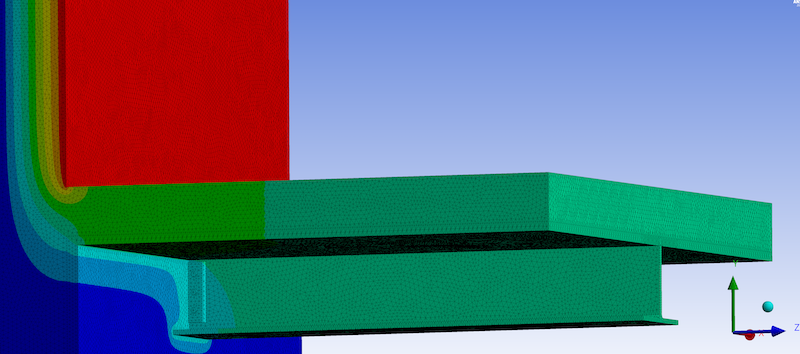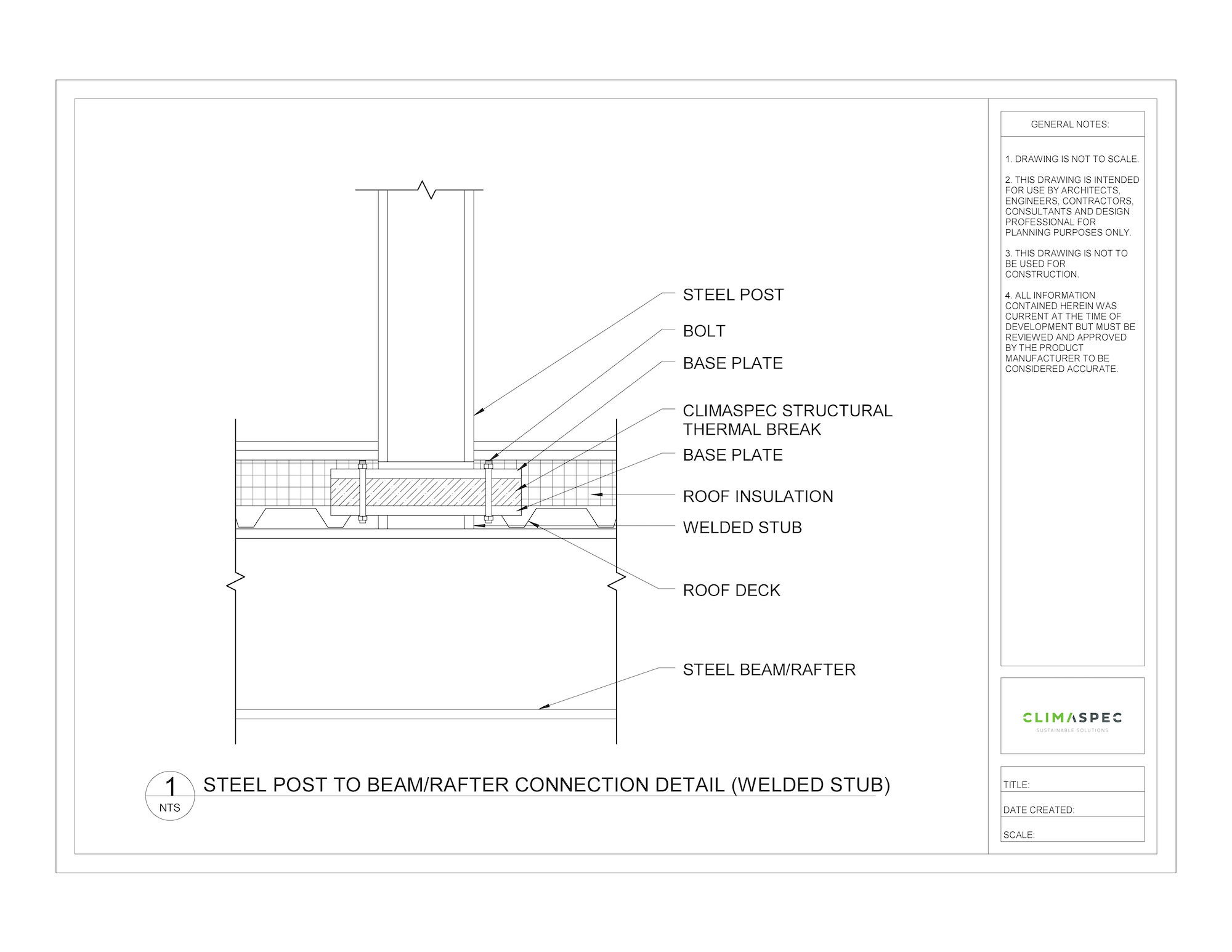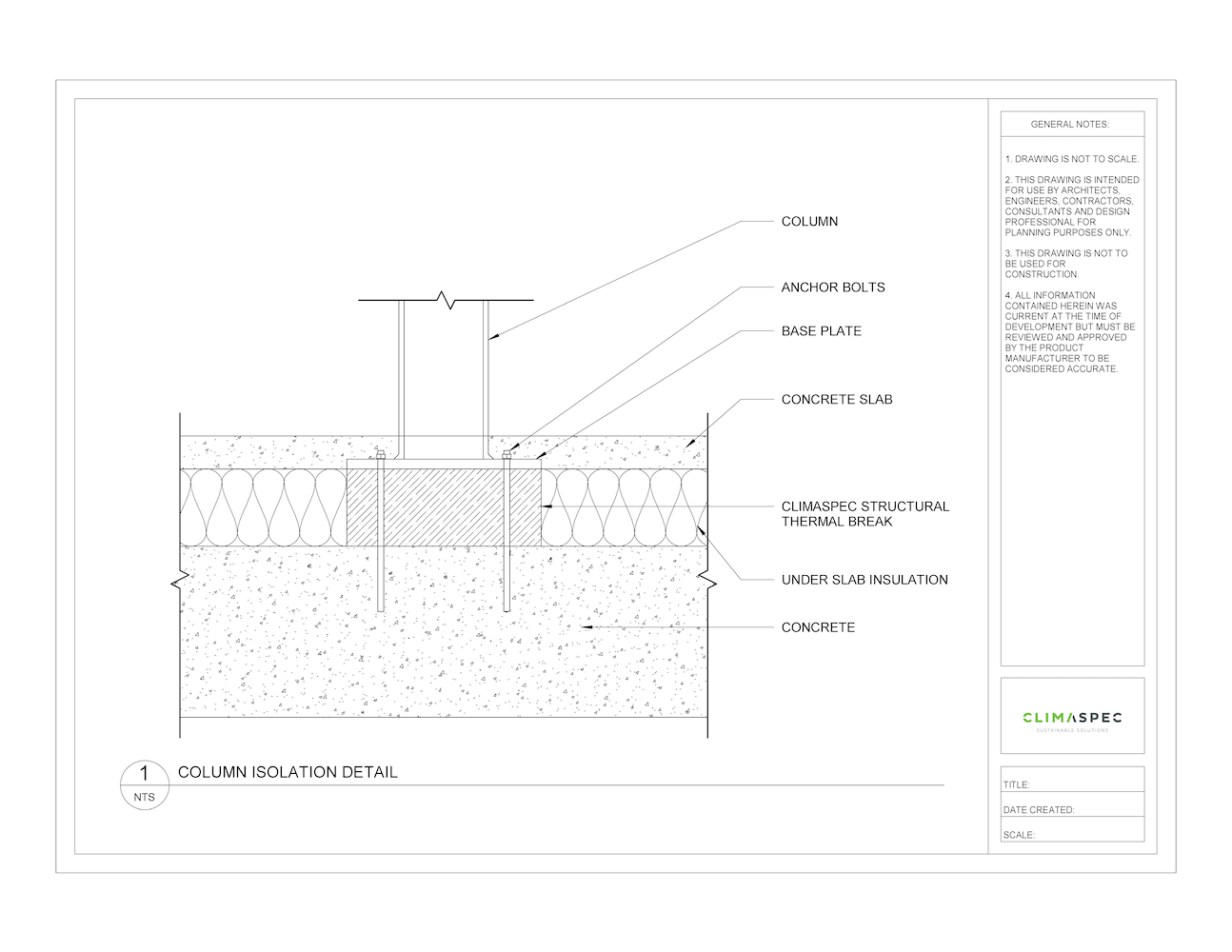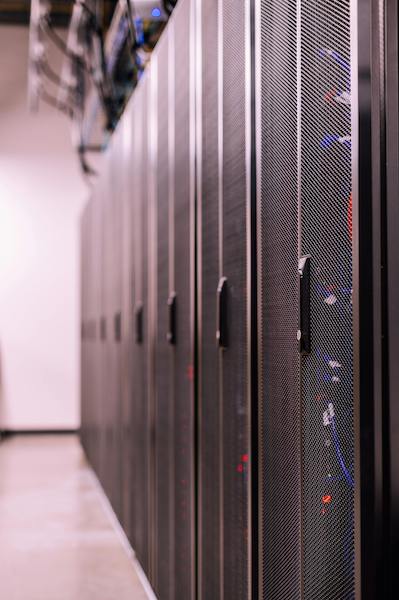
Table of Contents
- What are Data Centers?
- Tiers of Data Centers
- What Impacts Tier Performance
- Data Center Energy Consumption
- Thermal Bridging and Building Envelope Energy Efficiencies
- Reduce Thermal Bridging
- Data Center Structural Thermal Breaks
- Data Center Structural Thermal Break Example Details
- Building Envelope Thermal Modeling
- Data Center Thermal Bridging Summary
What are Data Centers?
Data centers are centralized physical facilities used for the storage, processing, management, and relaying of large amounts of data. They play a crucial role in supporting the digital infrastructure of organizations and businesses. Data centers house a network of computers, servers, storage systems, networking equipment, and other components, all working together to handle various computing tasks.
The rise of cloud computing and AI has significantly influenced the way data centers are structured and utilized, with cloud data centers providing on-demand access to computing resources over the internet.
Tiers of Data Centers
Data centers are classified into tiers based on their design, infrastructure, and reliability. The tier system was created by the Uptime Institute to provide a standardized way of evaluating and comparing data center facilities. The tiers range from Tier I to Tier IV*, with each tier representing a different level of capacity, redundancy, availability, and fault tolerance.
The traditional data center tier system, as defined by the Uptime Institute, primarily focuses on the infrastructure’s ability to provide continuous service and ensure high availability, but it does not explicitly consider environmental impact or sustainability.
*tier V is not currently used in the Uptime Institute Class System
What Impacts Tier Performance
The Uptime Institute’s tier system offers classifications for data centers with the goal of helping organizations evaluate and communicate the expected performance and availability of a data center facility, as well as provide an opportunity to improve for future assessments.
While the Uptime Institute’s tier standard provides valuable information about the reliability and availability of a data center, it does not directly address environmental factors such as “building energy efficiency” and carbon footprint. As a result, organizations interested in assessing the environmental impact of data centers often need to look beyond the tier classification system.

Data Center Energy Consumption
Due to the demands of reducing global carbon footprints, there is a real emphasis on the importance of designing data centers with sustainable methods. Data centers require a lot of energy to run, so much so that the largest data centers can consume as much power as 80,000 households, according to a report by McKinsey & Co.
In response to this, the data center industry has become increasingly aware of the importance of sustainability and environmental responsibility. Various organizations and initiatives have introduced certifications and standards specifically focused on evaluating and promoting environmentally friendly practices within data centers. Some examples include:
- Leadership in Energy and Environmental Design (LEED): LEED is a widely recognized green building certification program that evaluates the environmental performance of buildings, including data centers. Data centers can achieve LEED certification by meeting criteria related to energy efficiency, water conservation, material selection, and overall sustainability.
- Green Energy Certifications: Data centers can also pursue certifications that recognize the use of renewable energy sources. Certifications such as Renewable Energy Certificates (RECs) or Power Purchase Agreements (PPAs) indicate a commitment to using environmentally friendly energy sources.
- Energy Star for Data Centers: The U.S. Environmental Protection Agency (EPA) offers the Energy Star certification for data centers, which evaluates energy efficiency and performance. Achieving Energy Star certification requires meeting specific energy efficiency benchmarks.
- ISO 14001 (Environmental Management System): While not specific to data centers, the ISO 14001 standard provides a framework for implementing an environmental management system. Organizations can use this standard to demonstrate their commitment to environmental responsibility.
Thermal Bridging and Building Envelope Energy Efficiencies
With the continuous push for reducing carbon footprints, sustainable design methods for data centers are significant, simply due to their overall energy usage and consumption. Cooling systems in data centers play a critical role in maintaining optimal operating temperatures, which in turn help with their reliability and tier performance. By reducing the cooling requirements, the lower amount of energy consumption is required to keep the data center within the required interior temperature range. If less energy is required, improvements to the data center’s operating budget, improved sustainable impact, and energy efficiency can be achieved.
It has also been shown that 40 percent of the total energy that data centers consume goes to cooling IT equipment. When designing optimal insulation methods, it is important not to ignore thermal bridging. Thermal bridging can impact the performance of a data center, particularly in terms of energy efficiency and cooling effectiveness. Remember, thermal bridging occurs when there is a direct, conductive pathway for heat to transfer through the building envelope due to a conductive structural material such as steel, aluminum, or concrete. It can occur in both hot and cold climates, which creates even more challenges for data center facilities when trying to maintain optimal operating temperatures.

Examples of the impact thermal bridging can have on data centers:
Energy Inefficiency: Thermal bridging can result in increased energy consumption as the cooling systems need to work harder to maintain the desired temperature. When there are pathways for heat to bypass insulation, more energy is required to counteract the unwanted heat transfer.
Cooling Ineffectiveness: Data centers rely on efficient cooling systems to dissipate the heat generated by servers and other IT equipment. If thermal bridging occurs, the cooling systems may struggle to maintain the recommended temperature levels. This can lead to hot or cold spots, uneven cooling, and an increased risk of equipment overheating.
Increased Cooling Costs: As the cooling systems need to compensate for the unwanted heat transfer introduced through thermal bridging, operational costs associated with cooling, including electricity consumption and maintenance, may rise. Higher cooling costs can have a direct impact on the overall operational expenses of the data center.
Reduced Reliability: Thermal issues resulting from thermal bridging can compromise the reliability of data center operations. Servers and other IT equipment may experience higher failure rates or reduced performance when exposed to elevated temperatures. This can lead to downtime and impact the overall availability of services.
Impact on PUE (Power Usage Effectiveness): PUE is a metric used to evaluate the energy efficiency of a data center. Thermal bridging can negatively affect PUE by increasing the overall energy consumption without a proportional increase in IT work output. A higher PUE indicates lower energy efficiency.
Reduce Thermal Bridging
To reduce the impact of thermal bridging on data center performance, it’s crucial to employ effective insulation strategies, such as using structural thermal breaks, and ensure that the building envelope is designed to minimize heat transfer. Additionally, the layout and design of cooling systems should be optimized to address potential thermal issues and maintain a uniform temperature throughout the data center space. Thermal assessments, including thermal imaging and thermal modeling, can help identify and address any thermal bridging issues before they impact the data center’s performance.
All these factors collectively contribute to the overall reliability and availability of the data center, which can influence its tier classification. The higher the tier, the more resilient and fault-tolerant the data center is expected to be. Organizations should carefully evaluate their specific requirements as well as the demand for sustainable practices, and consider these factors when selecting a data center tier that aligns with their business needs and goals.
Data Center Structural Thermal Breaks
ClimaSpec Structural thermal breaks help mitigate thermal bridging by minimizing unwanted heat transfer through the insulation line of data center facilities. Thermal breaks help create a more controlled and stable thermal environment, and in the context of data centers, the incorporation of structural thermal breaks can offer several benefits:
Energy Efficiency: By reducing heat transfer through structural components such as steel or concrete framing, thermal breaks help improve the overall building energy efficiency of the data center. This can result in lower heating and cooling loads and reduce the energy consumption required to maintain optimal operating temperatures.
Reduced Cooling Load: Data centers generate significant heat from IT equipment, and cooling systems are essential to maintain the desired temperature. Structural thermal breaks can minimize heat transfer through the building envelope, reducing the overall cooling load on the HVAC (Heating, Ventilation, and Air Conditioning) systems. This contributes to more effective and efficient cooling operations.
Prevention of Condensation: In environments with temperature variations, condensation can occur when warm, most air and cold surfaces meet. Structural thermal breaks can prevent condensation by minimizing the temperature differences between structural elements that penetrate the insulation line. This is important in data centers to avoid moisture-related issues, such as damage to sensitive IT equipment.
Enhanced Equipment Performance: Maintaining a consistent and controlled temperature is critical for the reliable operation of IT equipment in data centers. Structural thermal breaks contribute to creating a more stable thermal environment, reducing the risk of hot or cold spots, and ensuring that servers and other hardware operate within their specified temperature ranges.
Data Center Structural Thermal Break Example Details
Steel Beams
Steel-framed buildings require structural thermal breaks where beams penetrate the building envelope and therefore create a thermal bridge. By splitting the continuous steel beam that bypasses the insulation line, and using a bolt-through connection within the building envelope, ClimaSpec TB Structural Thermal Breaks can be installed between two end plates that thermally and structurally separate the beam, therefore reducing unwanted heat loss and cooling requirements.
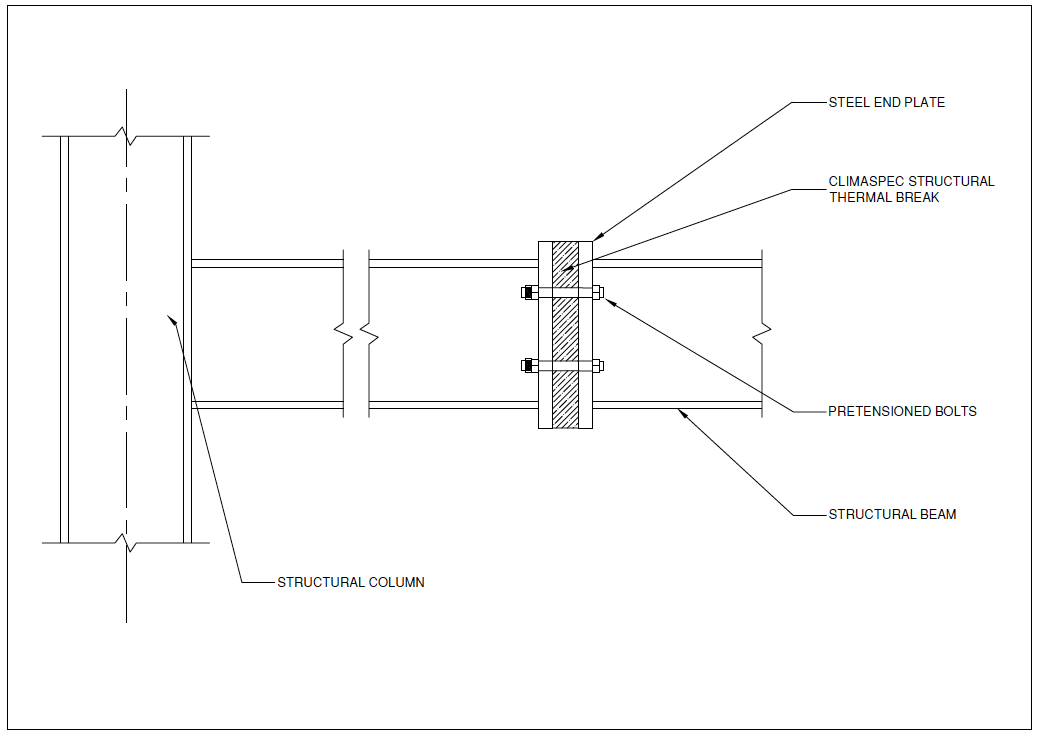
Column Bases
Steel columns pierce the below-slab continuous insulation and create a thermal bridge due to the high thermal conductivity of steel. ClimaSpec CI is installed between the steel column base plate and the concrete to improve the energy efficiency of the floor insulation and data center.

Tilt-Up/Pre-Cast
Thermal bridging occurs at the perimeter of tilt-up or pre-cast construction, where the wall finds the perimeter insulation. ClimaSpec CI has a high compressive strength and can support the weight of the wall while also improving its insulation performance.

Roof Penetrations
Roof dunnage, fall arrest systems, and steel posts are a few examples of roof penetrations that can occur on a data center roof. If the connection of the exterior roofing fixture penetrates the roof insulation when connected to the interior building frame, thermal bridging can occur. ClimaSpec structural thermal breaks can reduce unwanted heat loss by separating the base plate from the framing.

Parapet
Inefficient parapet designs create thermal bridging when the parapet breaks the roof perimeter insulation line. Simply wrapping the parapet with more insulation is not the most thermally efficient design. Installing ClimaSpec CI or TB directly under the parapet and therefore making the parapet exterior creates a more thermally efficient detail. Thermal modeling has proven this to be the case.
Building Envelope Thermal Modeling
Three-dimensional (3D) thermal modeling can be instrumental in minimizing thermal bridging and improving energy efficiencies in data centers by providing insights into heat transfer patterns, identifying potential thermal bridges, and guiding the design and optimization of the facility. Here’s how 3D thermal modeling can contribute to these efforts:
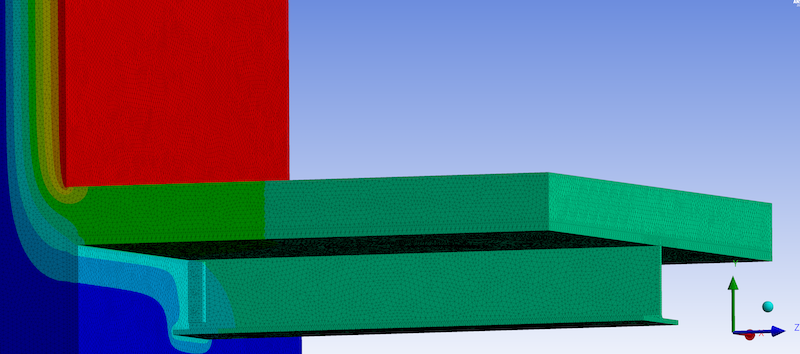
Visualization of Heat Transfer Paths: 3D thermal models allow for the visualization of heat transfer paths through penetrations of the building envelope. By understanding how heat moves through different materials and components, designers can identify potential thermal bridges.
Assessment of Penetrations and Joints: Thermal bridging often occurs at joints, penetrations, and connections within the building envelope. 3D thermal modeling enables a detailed assessment of these areas, allowing designers to implement solutions such as thermal breaks to ensure unwanted heat transfer is reduced.
Prediction of Thermal Performance: The modeling process allows designers to predict the thermal performance of a building assembly for a data center under different conditions. This includes assessing the impact of different temperature differentials and dew point analysis.
Data Center Thermal Bridging Summary
In summary, increasing the energy efficiency of building envelopes in data centers is essential for reducing operational costs, minimizing environmental impact, optimizing resource utilization, and aligning with broader corporate sustainability goals. By reducing thermal bridging with ClimaSpec Structural Thermal Breaks, data centers can reduce their cooling requirements and therefore their carbon footprint. This is important in the context of global efforts to address climate change.
Also, using thermal modeling and analysis during the design phase can help identify potential thermal bridging issues and optimize the placement of structural thermal breaks for maximum effectiveness.
To discuss how ClimaSpec can improve the building energy efficiency of your data center with ClimaSpec Structural Thermal Breaks and thermal modeling, contact us today.
